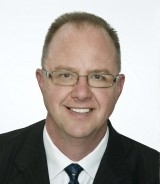Intensive Wireless Communications Engineering: Current Practices
3 day course (20 hours of instruction)
December 9-11
To register for this course, please visit http://www.ieee-globecom.org/registration.html
Monday, December 9 - Day One - 9:00am - 5:00pm
9:00am: Introduction and Welcome
9:15am - 10:00am: Fundamentals Review
10:00am - 11:45pm: RF Engineering, Propagation and Antennas
11:45am - 12:00pm: Q/A
(Topics covered include: Antenna basics and parameters; directivity, gain and effective aperture; antenna polarization and bandwidth; antenna types and diversity; phased arrays, beamforming, and smart antennas, MIMO. )
12:00-1:00pm: Lunch
1:00pm - 4:15pm: RF Engineering, Propagation and Antennas continues
4:15pm - 4:30pm: Q/A
(Radio Wave Propagation topics of lecture include: Line of Sight transmission theory; free space loss with a focus on the Friis Transmission Formula and Link Budget; spectrum and regulatory bodies; propagation environments; and software modeling tools. RF Transmission System & Engineering - the Superheteordyne Receiver; Receiver sensitivity; frequency conversion process; receiver dynamic range; filter and selectivity; receiver phase noise; direct conversion & other receivers; detector & demodulator are some of the concepts discussed.)
Tuesday, December 10, Day Two: 9:30am - 5:00pm
9:30am - 11:45am: Wireless Access Technologies
11:45am - 12:00pm: Q/A
(Learn about access technology attributes and evolution; mobile cellular standards and technology evolution; gain an introduction to IEEE Wireless Technologies; satellite communications attributes, other wireless systems; spectrum considerations, tends and the future.)
12:00pm - 1:00pm: Lunch
1:00pm - 4:45pm: Network and Service Architectures
4:45pm - 5:00pm: Q/A
(Review fundamental networking concepts; IP networking fundamentals, including IPv6; mobility management; 802.11-based WLAN network fundamentals; basics of teletraffic analysis. In this section Cellular network architectures (Functional requirements; network elements and functions; network protocols; examples of signalling for call delivery, roaming, etc.; packet data services in 2G cellular systems) are addressed as is how we are moving towards an all IP-Core Network (Technologies for QoS support and VoIP transport; SIP signalling; cellular network evolution to all-IP core network architectures; IP Multimedia Subsystem; LTE's Evolved Packet Core. Additionally, service architectures and alternative architectures (IMS; service creation and architectures, including Parlay/OSA concepts; mesh networks; ad hoc networks; satellite networks) are examined.)
Wednesday, December 11, Day Three - 9:30am- 5:00pm
9:30am - 11:45am: Wireless Network Management and Security
11:45am - 12:00: Q/A
(Gain a deeper understanding of Network Management: Motivation, Internet protocol suite and SNMP; network management attributes; ITU TMN, FCAPS and Layers; reference architecture and interfaces; business process framework; network management evolution. Under Security learn about: Basic concepts; wireless security; WiFi security; cellular security [GSM, UMTS, LTE]).
12:00- 1:00pm: Lunch
1:00pm - 2:00pm: Wireless Network Management and Security continues
2:00pm - 2:15pm: 15 minute break;
2:15pm - 3:15pm: Facilities Infrastructure
(The Infrastructure and Wireless Communication part of the course delves into wireless base station equipment; site development, and industry standards.)
3:15pm -4:30pm: Agreements, Standards and Policies
4:30pm - 5pm: Q/A

Instructor: Lee Vishloff
PEng, IEEE WCP
Mr. Vishloff has nearly 30 years of experience in wireless systems and product design. His designs have covered a wide range of wireless applications including satellite, cellular packet data, rural telephony, microwave radio, aeronautical, and others. Lee brings a wide range of practical experience having hands-on and management experience with wireless telecommunication systems, modem, RF, analog, digital, embedded firmware and mechanical design technologies. His experience is largely in ground-up design where user and technical requirements are translated from paper into working products.
He has spent the majority of his career working with equipment manufacturers, with stints in the semiconductor and consulting businesses. He has served on numerous joint industry-academic committees during his career, strengthening the link between academic research and practical industry needs.
Lee has a degree in Electrical Engineering from the University of British Columbia and completed his management education at Simon Fraser University and the AEA/Stanford Executive Institute. He holds one patent and is a Professional Engineer in the Province of British Columbia, Canada.
Questions about the course?
Send them directly to Marilyn Catis via email at m.catis@comsoc.org.
Back home >>

